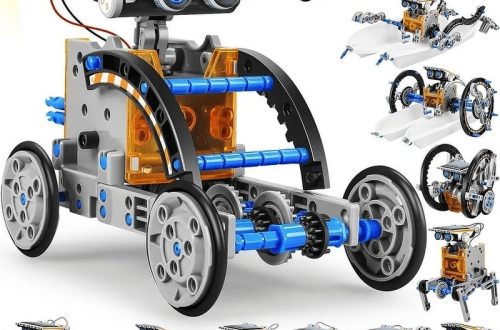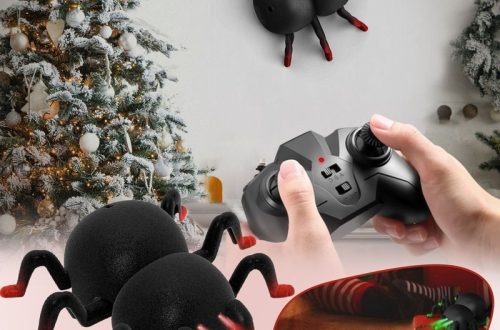Part 1: Understanding FPV Drone Kits
Building an FPV (First Person View) drone kit from scratch provides an opportunity for customization and a deeper understanding of drone technology. It comprises assembling individual components to create a personalized and functional drone for aerial photography and FPV flying.
1. Components of FPV Drone:
A complete FPV drone kit typically consists of a frame, flight controller, motors, propellers, electronic speed controllers (ESCs), power distribution board (PDB), camera, video transmitter, receiver, antennas, battery, and FPV goggles or monitor.
2. Customization and Compatibility:
Building a custom FPV drone kit allows enthusiasts to choose specific components that meet their requirements and preferences. It offers the flexibility to select compatible parts that result in a well-integrated and high-performance drone.

Part 2: Selecting the Right Components
When building an FPV drone kit, selecting the right components is crucial to ensure compatibility, performance, and reliability. Each component contributes to the overall functionality and flight characteristics of the drone.
1. Frame and Structure: The Backbone of Your Drone
The frame is the structural foundation of an FPV drone, providing support for all the essential components. The choice of frame material significantly impacts the drone’s durability, weight, and overall performance. Carbon fiber is a popular choice due to its high strength-to-weight ratio, making it ideal for drones that require both durability and maneuverability. Aluminum frames, while slightly heavier, offer excellent durability and can be more affordable.
The size of the frame determines the overall dimensions of the drone and its ability to accommodate larger components, such as larger batteries or higher-resolution cameras. A larger frame may provide more space for internal components, but it can also lead to increased weight and reduced maneuverability.
The design of the frame is another important consideration. Arm design, motor placement, and battery compartment configuration can all impact the drone’s flight characteristics. A well-designed frame can improve stability, maneuverability, and ease of assembly.

2. Flight Controller and Electronics: The Drone’s Brain
The flight controller is the central nervous system of an FPV drone, responsible for stabilizing the drone, controlling its movement, and navigating its surroundings. It receives data from various sensors, such as gyroscopes, accelerometers, and barometers, and processes this information to make real-time adjustments to the drone’s flight.
A reliable flight controller is essential for smooth and responsive flight performance. Look for flight controllers with features like GPS integration, obstacle avoidance, and advanced flight modes. These features can enhance safety and provide more control over the drone’s flight.
Electronic speed controllers (ESCs) are another crucial component of the drone. They convert the electrical signal from the flight controller into a mechanical signal to control the motors. High-quality ESCs are essential for precise motor control and efficient power delivery.
Part 3: Assembling and Wiring the Drone Components
Assembling and wiring the individual components of an FPV drone kit requires attention to detail and basic understanding of electronics. Proper assembly and wiring ensure that the drone functions correctly and safely during flight.

1. Assembly Process: Building Your Drone
The assembly process involves carefully mounting various components onto the drone frame. This includes attaching the motors, propellers, flight controller, ESCs, PDB, and any additional components. Proper mounting is essential for ensuring that the drone is balanced and stable during flight. A poorly mounted component can lead to vibrations, instability, and even crashes.
When assembling the drone, it’s important to follow the manufacturer’s instructions and use the provided hardware. Pay attention to the alignment of the components and ensure that they are securely fastened. A loose component can cause problems during flight, such as motor vibrations or dislodged wires.
2. Wiring and Integration: Connecting the Dots
Proper wiring and integration of electronic components are crucial for the drone’s functionality. The wiring must establish electrical connections between the various components, ensuring that power is distributed efficiently and signals are transmitted correctly.
Careful routing and organization of the wiring are essential for maintaining a clean and functional layout. Tangled or poorly routed wires can cause problems during flight, such as electrical shorts or interference with other components. Use cable ties or zip ties to secure the wires and prevent them from becoming tangled.
Part 4: Testing and Calibrating the Drone
After assembling and wiring the components, thorough testing and calibrating procedures are necessary to verify proper functionality and performance. This step ensures that the drone is safe and ready for flight.

1. Pre-Flight Checks: Ensuring Safety and Functionality
Before taking flight, it’s essential to conduct thorough pre-flight checks to ensure the safety and functionality of your drone. This includes inspecting all connections to ensure they are secure and free from any loose wires. Check all fasteners, such as screws and bolts, to make sure they are tightened properly.
The overall integrity of the drone should also be assessed. Look for any signs of damage, such as cracks or broken components. If you notice any issues, address them before flying to avoid potential problems.
Battery health and charge level are critical factors to consider. Ensure that the battery is fully charged and in good condition. A low battery can lead to unexpected landing or loss of control. Additionally, check the battery’s voltage to make sure it is within the recommended range.
Finally, verify that all electronic components are operational. Test the motors, flight controller, ESCs, and other systems to ensure they are functioning correctly. This can help identify any potential issues before taking flight.
2. Calibration and Setup: Fine-Tuning Your Drone
Calibration and setup are essential steps for optimizing the performance of your drone. Calibrating the flight controller involves ensuring that the sensors are aligned correctly and providing accurate readings. This is crucial for stable flight and precise control.
ESCs also require calibration to ensure proper operation. Calibration helps to set the minimum and maximum throttle values, ensuring that the motors respond correctly to control inputs.
Proper setup of other systems, such as the GPS module and compass, is also important. These components provide essential data for navigation and orientation. By calibrating these systems, you can improve the drone’s accuracy and reliability.
Part 5: Safety Precautions and Regulatory Compliance
Building and flying FPV drones require adherence to safety guidelines and regulatory requirements to ensure responsible and lawful operation. Understanding these precautions and regulations is crucial for safe and legal drone piloting.

1. Safe Flying Practices: A Responsible Approach
Adhering to safe flying practices is essential for ensuring the safety of yourself, others, and your drone. Maintaining visual line of sight (VLOS) is a fundamental principle of drone operation. This means keeping the drone within sight at all times, allowing you to monitor its flight path and avoid obstacles.
Flying over populated areas is generally prohibited due to the potential risks involved. Always be mindful of your surroundings and avoid flying over people, buildings, or other structures. Flying near airports or other restricted airspace is also strictly prohibited, as it can pose a risk to manned aircraft.
Environmental conditions can significantly impact drone flight. Avoid flying in adverse weather conditions such as strong winds, rain, or fog, as these can reduce visibility and make it more difficult to control the drone. Additionally, be mindful of wildlife and avoid flying near sensitive ecosystems.
By following these safe flying practices, you can reduce the risk of accidents and ensure that your drone operation is responsible and respectful of others.
2. Regulatory Compliance: Understanding the Rules
Depending on your region, there may be specific regulations and guidelines governing recreational or commercial drone operation. It’s essential to familiarize yourself with the local aviation authorities’ rules and regulations to ensure compliance.
Registration is often required for recreational drones, while commercial drone operators may need to obtain a license or permit. These requirements vary by country and region, so it’s important to check the specific regulations that apply to you.
Adhering to flight restrictions and airspace rules is another important aspect of regulatory compliance. Some areas may have restrictions on drone flights, such as national parks, wildlife sanctuaries, or near airports. It’s essential to research and understand these restrictions to avoid any legal issues.
Part 6: Further Customization and Upgrades
After completing the basic build of an FPV drone kit, enthusiasts have the option to further customize and upgrade their drones based on their evolving needs, preferences, and advancements in drone technology.
1. Advanced Features and Upgrades:
This may involve adding advanced features such as GPS, telemetry, custom firmware, or upgrading components for enhanced performance, longer flight times, and improved video transmission capabilities.
2. Ongoing Maintenance and Improvement:
Regular maintenance and ongoing improvement of the FPV drone kit, including component inspection, firmware updates, and performance tuning, contribute to a reliable and optimized flying experience.
In conclusion, building an FPV drone kit from scratch offers enthusiasts the opportunity to create a customized and high-performing drone tailored to their specific needs and preferences. Through careful component selection, assembly, testing, and ongoing customization, builders can experience the satisfaction of creating a functional and personalized FPV drone for aerial photography and FPV flying.




